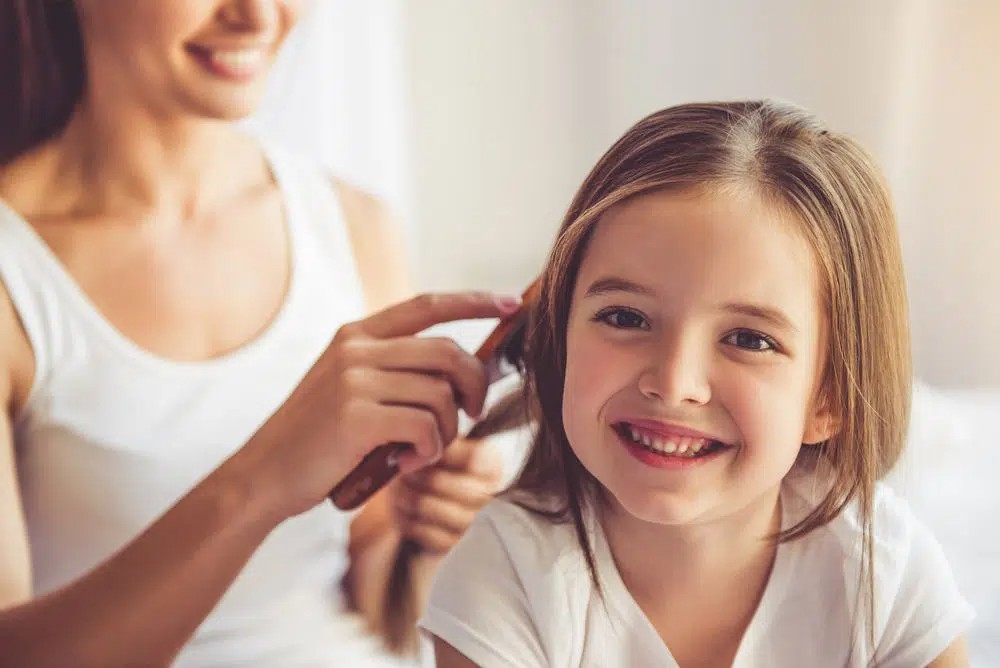Many parents face the same daily battle. Your toddler’s hair feels rough no matter what products you try. It tangles after every nap and turns into a bird’s nest by bedtime. Simple styling attempts end in tears, both yours and theirs.
The problem isn’t your parenting skills or lack of expensive products. Toddler hair is fundamentally different from adult hair, and it needs a completely different approach to become soft and silky. You’ll learn why your child’s hair behaves so differently from yours and how to work with its unique texture instead of fighting against it.
Learn in 9 proven methods how to make toddler hair soft and silky, safe products designed for delicate scalps, and simple daily routines that prevent damage before it starts. No more morning meltdowns or bedtime battles.
How to Make Toddler Hair Soft and Silky Naturally: 9 Gentle Methods For Frizz-Free Hair
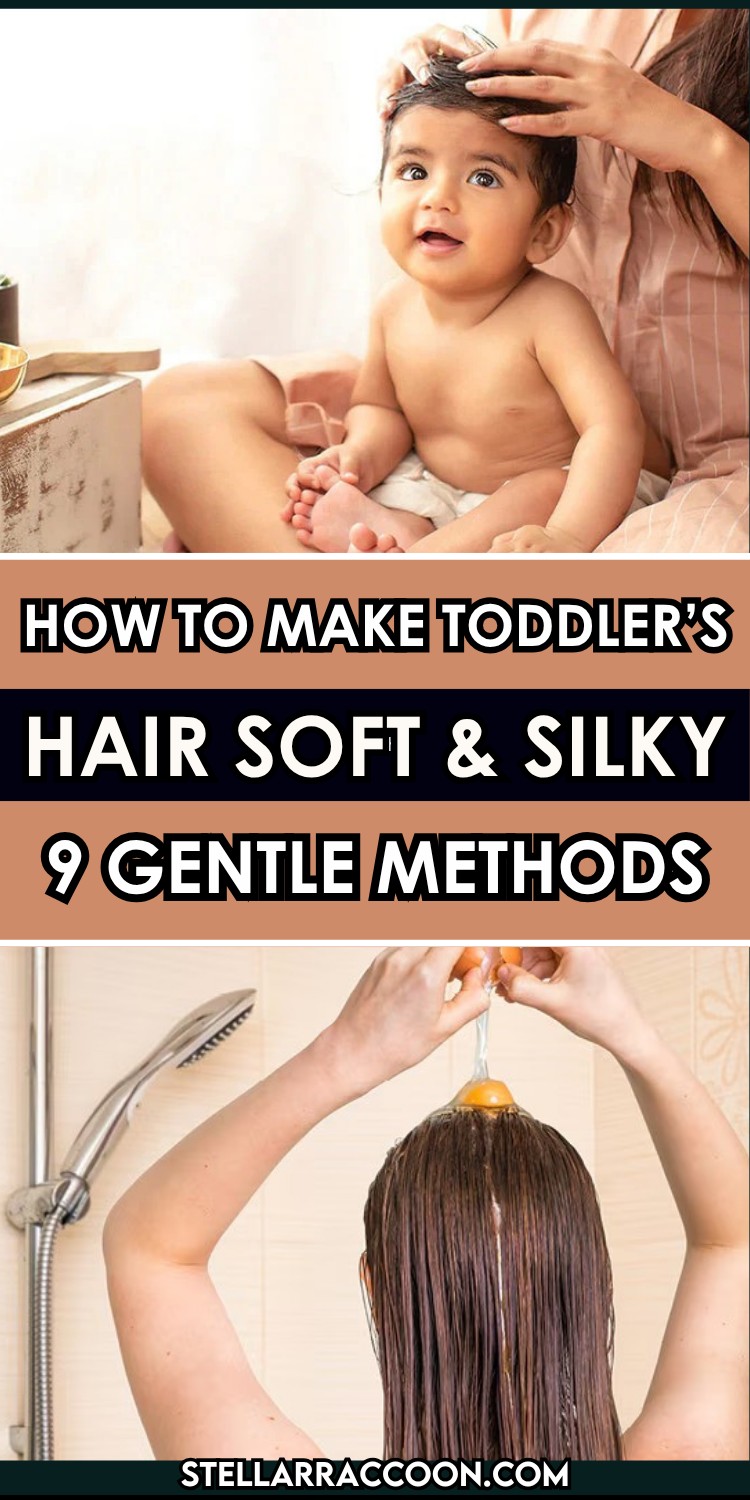
Why Toddler Hair is Different From Adult Hair
Toddler hair starts differently from the root up. Their hair follicles are still developing, so each strand isn’t fully mature yet. Your child’s scalp produces much less oil than yours does, leaving their hair drier and harder to style.
The hair shaft itself runs much thinner than adult hair. That’s why it feels soft but tangles easily and won’t hold styles.
Toddler hair grows faster – about 6 inches per year compared to your 4-6 inches – but in unpredictable directions as follicles find their permanent position.
Environmental factors hit that delicate texture harder, too. Sun, wind, and daily activities affect toddler hair more than your tougher adult strands.
9 Proven Methods to Achieve Soft, Silky Hair
Your toddler’s hair feels like straw no matter what expensive products you buy. These proven methods work, and most take less than 15 minutes.
1. Oil Treatments – Weekly Deep Conditioning

Apply coconut, jojoba, or argan oil to damp hair once weekly. Use about a teaspoon for shoulder-length hair – more clogs pores and attracts dirt. Work it through mid-lengths to ends, avoiding the scalp. Leave for 30-45 minutes, then shampoo twice to remove all residue.
Coconut oil penetrates hair shafts better than other oils, making it perfect for fine toddler hair. Test oils on a small skin patch first; some kids are allergic to coconut or tree nuts.
2. Protein Treatments – Monthly Hair Food
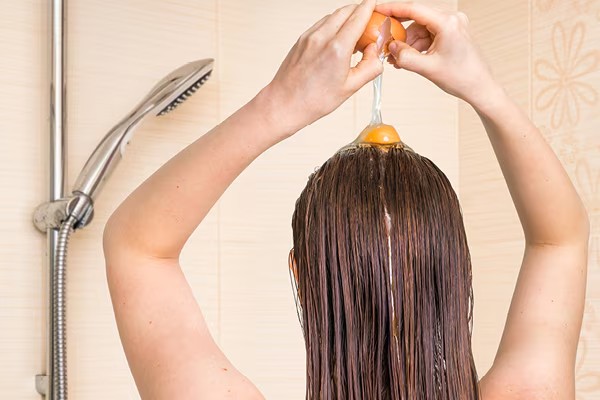
Beat one whole egg and apply to clean, damp hair monthly. Cover with a shower cap and leave for 15 minutes maximum. Rinse with cool water only – hot water cooks the egg and creates a sticky nightmare.
Skip this if your toddler has egg allergies. Hair is mostly protein, so it needs protein to stay strong and flexible.
3. Detangling Techniques – End the Battle
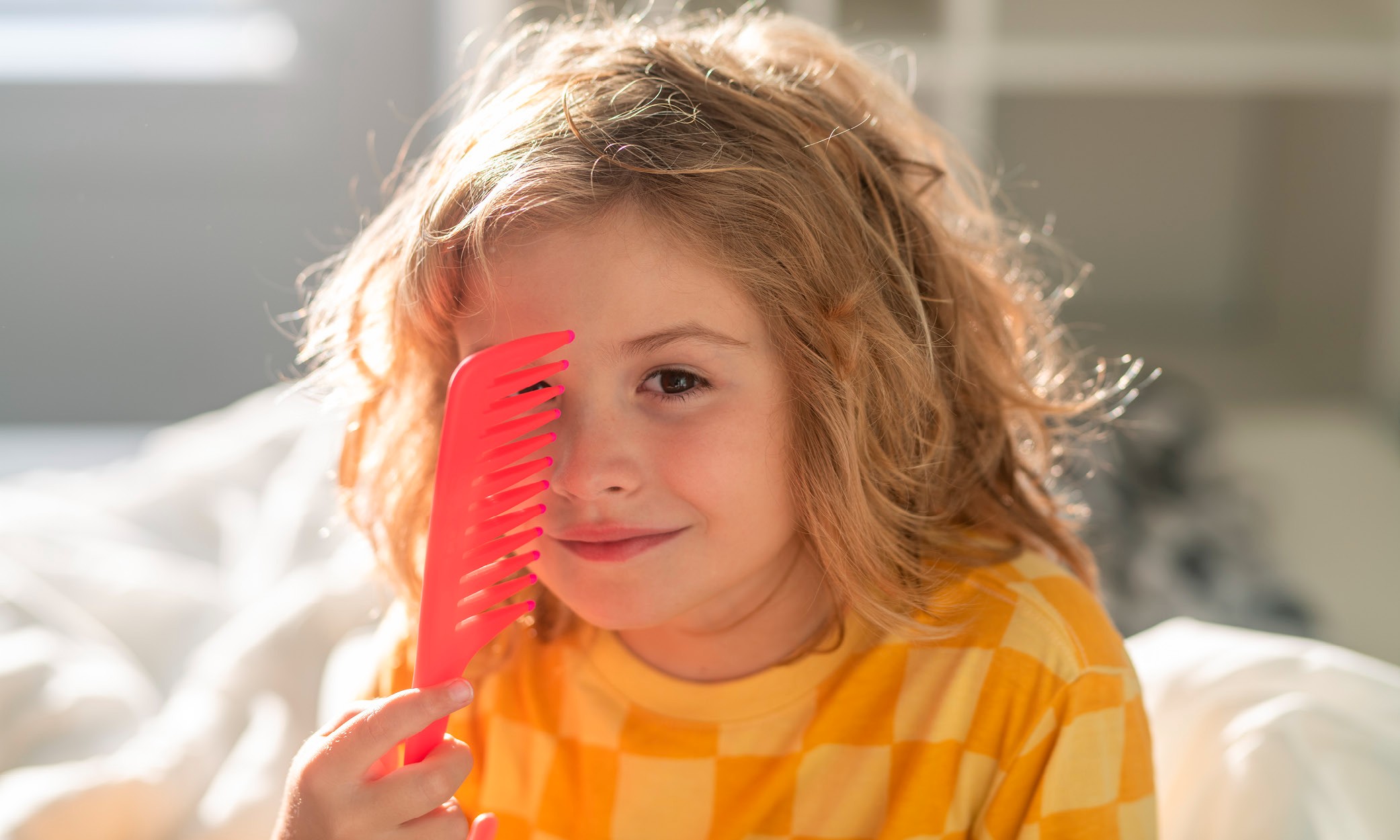
Always detangle wet hair with a wide-tooth comb or wet brush. Start at the ends and work up in 2-inch sections. Hold the section above where you’re working to reduce scalp pulling.
For major tangles, apply detangling spray first. Work through knots with your fingers before using any tools. This prevents the painful pulling that makes toddlers hate hair time.
4. Protective Styling – Prevention Beats Repair
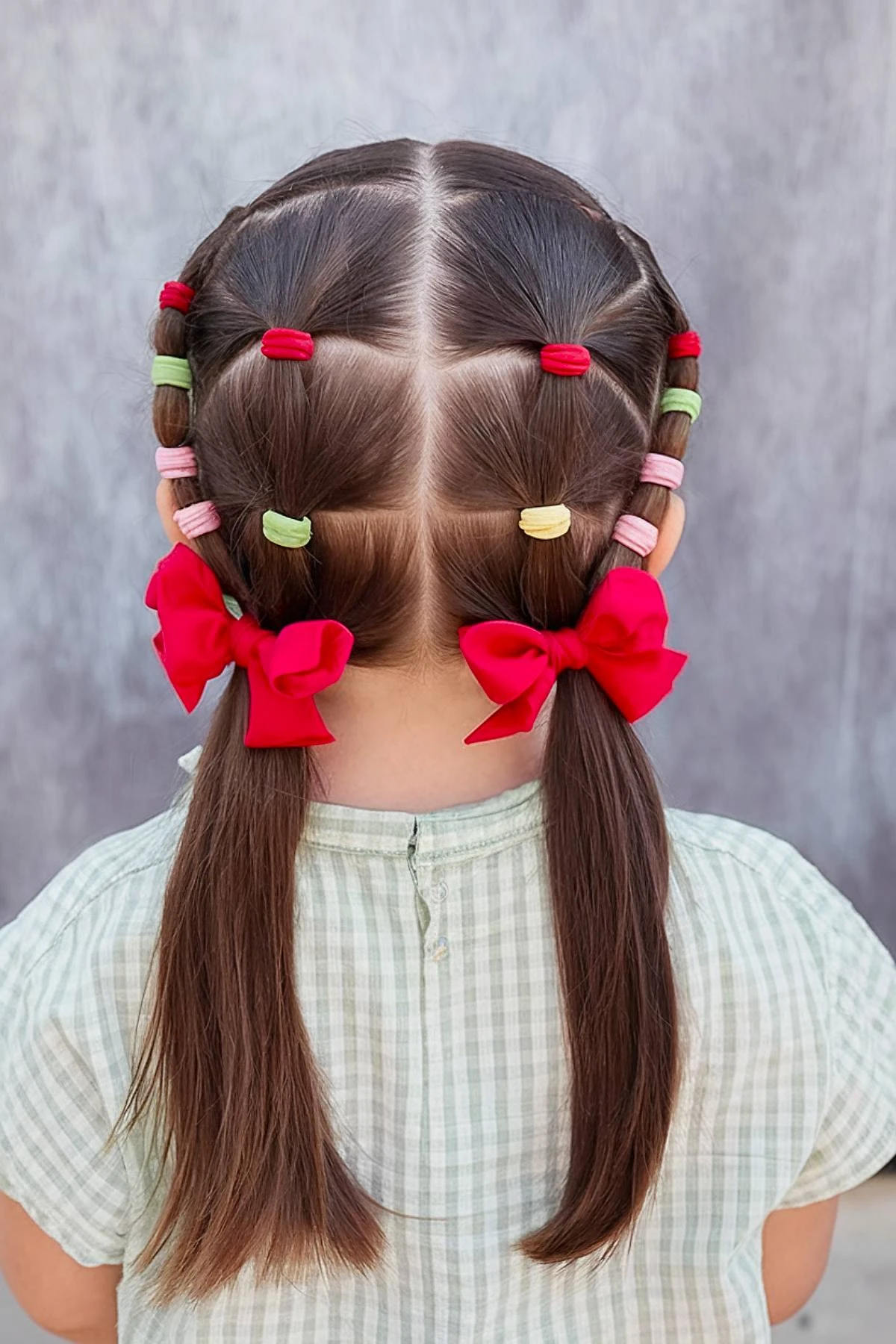
Braid hair loosely before bed to prevent 90% of morning tangles.
Switch to silk or satin pillowcases. Cotton creates friction that roughens hair cuticles. Silk costs more upfront, but protects hair and skin for years.
5. Nutritional Support – Feed Hair From Inside

Serve salmon, walnuts, or chia seeds twice weekly for omega-3s. Eggs provide complete proteins plus biotin for hair growth. Sweet potatoes supply vitamin A, which helps produce natural scalp oils.
Don’t rely on supplements unless your pediatrician recommends them. Food sources work better and are safer for toddlers.
6. Hydration Methods – Daily Moisture Without Grease

Use leave-in conditioners designed for kids after washing. They contain lighter ingredients than adult versions. Focus on ends where hair is oldest and most damaged.
Make hair mists by mixing water with a drop of leave-in conditioner in a spray bottle. Perfect for daily touch-ups between wash days.
7. Regular Trimming – Small Cuts Prevent Big Problems
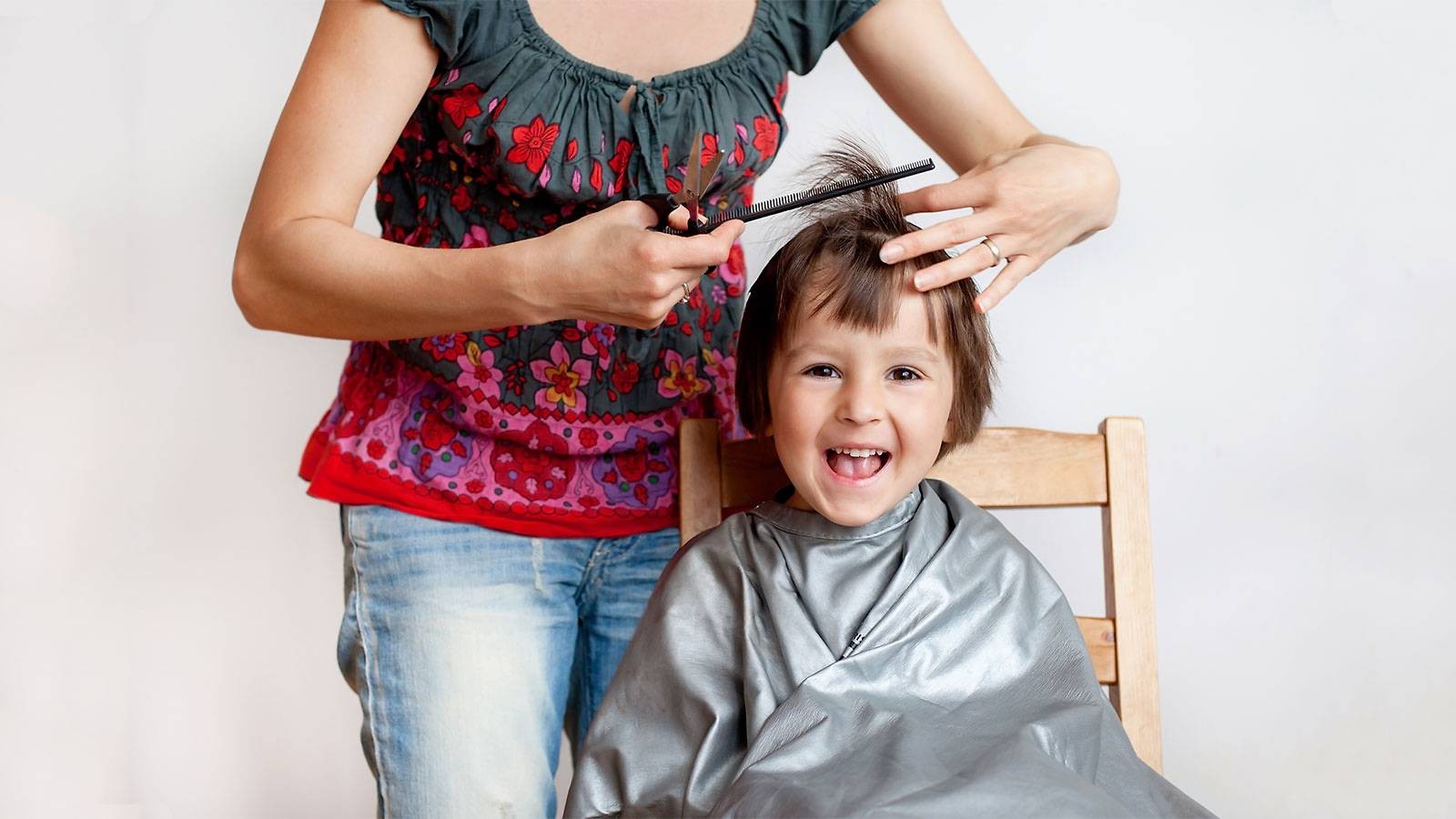
Trim every 6-8 weeks to prevent split ends from traveling up the hair shaft. Even if you’re growing hair out, regular trims keep it healthy and help it grow faster.
Find a stylist experienced with toddlers who can work quickly and keep little ones distracted.
8. Environmental Protection – Shield From Damage
Wet your hair with clean water before swimming in pools. Saturated hair absorbs less chlorine, which strips moisture and creates tangles.
Use hats in strong sun and wind. Apply leave-in conditioner before beach days for UV protection.
9. Gentle Drying – Preserve Hair Structure
Air drying protects hair best. If you must blow dry, use the lowest heat setting and keep the dryer moving constantly. Microfiber towels reduce friction compared to regular bath towels.
The Gentle Cleansing Foundation
Your regular shampoo burns your toddler’s eyes and strips their delicate hair. Time to fix that.
Choose sulfate-free, tear-free formulas with coconut oil, shea butter, or oat extracts. These ingredients clean gently without removing the natural oils your toddler’s scalp barely produces.
Wash only 2-3 times per week. Daily washing dries out their hair completely.
Use lukewarm water and focus shampoo on the scalp, not the hair lengths. Massage gently with fingertips for 2-3 minutes. The most important step? Rinse thoroughly until water runs clear. Leftover residue causes irritation and tangles.
Daily Hair Care Routine for Busy Parents
You have five minutes to get your toddler ready. Here’s how to make their hair cooperate without the morning meltdown.
1. 5-Minute Morning Routine
Skip the brush on dry hair; it creates static and tangles. Instead, lightly mist hair with water or leave-in conditioner from a spray bottle. This takes 30 seconds and makes everything else easier.
For quick styling, use your fingers to smooth hair into place. Gentle finger-combing works better than brushes on fine toddler hair. If you need a part, use the end of a rat-tail comb – it’s faster and more precise.
Loose ponytails or clips work for active toddlers. Avoid tight elastics that leave dents and cause breakage. The whole morning routine should take 3-5 minutes max. Some days, finger-combing and going is perfectly fine.
2. 10-Minute Evening Routine
Bedtime is when you prevent tomorrow’s tangles. Start by checking for food or dirt – toddlers are magnets for both.
If hair needs detangling, mist it lightly first. Work through any knots with your fingers or a wide-tooth comb. Start at the ends and work up slowly.
Braid long hair loosely or use a silk scrunchie for a low ponytail. This prevents friction tangles while they sleep.
3. Weekly Deep Treatment Schedule
Pick one day for your weekly oil treatment. Saturday mornings work well since you have more time. Apply oil 30 minutes before bath time, then follow your regular gentle washing routine.
4. Travel-Friendly Routine Adaptations
Pack travel-sized leave-in conditioner and a wide-tooth comb. Hotel water can be harsh, so rinse hair with bottled water if possible. Bring silk scrunchies; they pack small and prevent hotel pillow tangles.
Stick to your routine even when traveling. Consistency keeps toddler hair manageable no matter where you are.
Common Mistakes That Damage Toddler Hair
Daily washing strips natural oils. Heat styling tools burn delicate strands. Tight ponytails cause breakage. Regular brushes create static and tangles. Adult shampoos contain harsh chemicals.
Fix it: Wash 2-3 times weekly, skip heat tools, use loose styles and wide-tooth combs.
FAQs.
Q1: What’s the best shampoo for making toddler hair soft and silky?
Use sulfate-free, tear-free formulas with coconut oil, shea butter, or oat extracts designed for children.
Q2: How do I detangle my toddler’s hair without causing pain and tears?
Always detangle wet hair with a wide-tooth comb, starting at the ends and working up with detangling spray.
Q3: When will my toddler’s hair texture change to feel more like adult hair?
Hair texture stabilizes between ages 2-7 as follicles develop – thin, soft toddler hair is completely normal.

